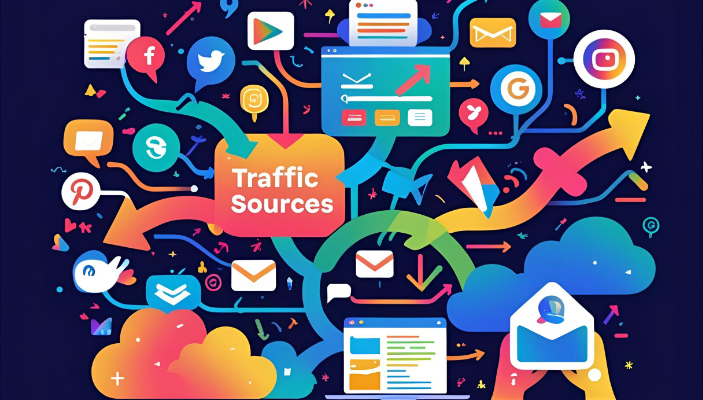Artificial Intelligence has shifted from a competitive edge to a business necessity. By 2025, companies that lag behind in adopting AI will risk losing market relevance. This isn’t about just following trends—it’s about recognizing where customer needs, operational efficiency, and digital ecosystems are headed.
AI’s role in shaping products, processes, and experiences is more embedded than ever. But it’s not about buzzwords or hype—it’s about practical applications and clear ROI. Below are the 7 most important AI shifts in 2025 that every business leader, marketer, and product team should understand and prepare for.
1. Context-Aware AI Is Raising User Expectations
[Contextual AI for Personalized Experience]
AI in 2025 is becoming more than just predictive—it’s becoming perceptive. Thanks to advances in contextual awareness, systems can now understand user behavior in relation to time, location, emotional tone, and past decisions.
Instead of just offering product suggestions, AI platforms now anticipate needs—like recommending a workflow solution based on the time of day, recent team tasks, or even sentiment detected in messages.
Key Applications in 2025:
- Smart assistants that respond differently depending on user tone.
- E-commerce platforms adapting pricing or product suggestions based on local weather or user schedule.
- Customer service bots tailoring replies based on emotion-detection algorithms.
Why It Matters: Businesses that ignore context risk delivering generic, outdated experiences—while those that integrate it will meet users exactly where they are.
2. AI Is Now a Core Part of Cybersecurity Strategy
[AI-Powered Threat Detection and Risk Response]
In 2025, cybersecurity isn’t just about firewalls and passwords—it’s an AI-first domain. With threat patterns evolving hourly, traditional static defenses fall short. AI tools now provide real-time pattern recognition and anomaly detection to flag potential risks before damage occurs.
Emerging Use Cases:
- Financial firms using AI to detect fraud within seconds.
- Healthcare platforms identifying suspicious access attempts in patient data.
- Retailers protecting supply chain integrity by monitoring IoT signals.
Why It Matters: Businesses face increasing pressure from regulators and users to safeguard data. AI not only protects assets but boosts customer trust.
3. Generative AI Is Moving Into Core Business Workflows
[Content Automation Meets Strategic Operations]
2023 and 2024 saw the explosion of AI-generated content. But in 2025, it’s not just about text or image creation—Generative AI is being integrated into workflows from marketing to logistics.
Instead of being a creative novelty, it’s now embedded in daily operations:
- Sales teams generate hyper-relevant proposals.
- Developers prototype user interfaces in minutes.
- HR teams create internal training modules tailored to employee profiles.
Why It Matters: Generative AI allows companies to reduce time spent on repetitive content tasks and focus more on strategy, creativity, and high-value decisions.
4. AI Is Reinventing Supply Chains Through Real-Time Optimization
[Dynamic Forecasting and Inventory Intelligence]
Supply chains in 2025 no longer depend solely on static ERP systems. AI tools offer real-time inventory tracking, predictive demand forecasting, and smart rerouting of logistics.
For example:
- AI predicts inventory shortages weeks in advance using retail patterns and weather data.
- Delivery delays are mitigated in real-time by rerouting based on live traffic and warehouse conditions.
- Manufacturers use AI to adjust procurement dynamically depending on international trade shifts.
Why It Matters: Flexibility is the new currency in logistics. Companies able to respond instantly to disruption will have a significant advantage over slower, legacy-based competitors.
5. Voice AI Is Creating a New User Interaction Standard
[Conversational UX and Business Communication]
Voice-based interfaces are evolving rapidly. In 2025, voice AI is not just for smart speakers—it’s entering business workflows, from internal communications to consumer interactions.
Emerging applications:
- Employees managing tasks via voice-activated dashboards.
- Clients placing orders or booking services through intelligent voice assistants.
- Senior leaders using voice summaries to get real-time data briefings.
Unlike static commands, voice AI now understands nuance, intent, and business context.
Why It Matters: Voice reduces friction and increases accessibility. Businesses that optimize for it can serve more users with less training or interface complexity.
6. AI Governance Is Becoming a Strategic Imperative
[Compliance, Ethics, and Transparent Algorithms]
With AI playing a bigger role in sensitive decisions—like hiring, lending, or insurance pricing—governance is now a business-critical component.
In 2025, global regulatory bodies have introduced new frameworks requiring:
- Explainability in AI decision-making.
- Accountability for bias mitigation.
- Transparent model training documentation.
Companies without governance strategies will face legal, reputational, and financial risks.
Why It Matters: Trust is everything. Businesses need to show customers and regulators that their AI systems are ethical, inclusive, and fair—not just functional.
7. Multimodal AI Is Powering Seamless Experiences
[Integrated Visual, Text, and Data Understanding]
The next wave of AI is multimodal—systems that understand not just text, but images, videos, graphs, and spoken language in a unified context.
Picture this:
- A customer support system that analyzes a video screen-recording, user comments, and support logs together to diagnose problems.
- Marketing teams using AI to generate campaign creatives by analyzing both visual trends and audience sentiment.
- Medical AI interpreting imaging, physician notes, and lab results simultaneously for diagnostics.
Why It Matters: Businesses can now offer experiences that feel cohesive, smart, and genuinely helpful. No more siloed data—multimodal AI creates holistic insights.
How to Prepare Your Business for These Shifts
These 7 trends are not just interesting—they’re actionable. Businesses should take the following steps to stay relevant in the evolving AI landscape:
1. Build Cross-Functional AI Literacy
Don’t leave AI to tech teams alone. Train teams across sales, HR, product, and operations to understand what AI can do.
2. Invest in Scalable, Ethical Tools
Choose platforms with built-in explainability and bias checks. Look for vendors that prioritize transparency.
3. Pilot Before Scaling
Start with focused AI pilots in key departments. Measure ROI before expanding across the enterprise.
4. Rethink Data Infrastructure
AI is only as good as the data it runs on. Ensure your data is clean, structured, and accessible across teams.
5. Focus on User-Centered Design
Adopt a people-first mindset when implementing AI—focus on ease of use, accessibility, and transparency.
Closing Thoughts
AI in 2025 is practical, powerful, and very real. But it’s not about being first—it’s about being thoughtful. Businesses that understand the nuances of these trends and implement them with strategy, care, and clarity will gain more than efficiency—they’ll earn trust, loyalty, and long-term growth.
Avoid chasing hype. Instead, focus on aligning AI with your company’s values, goals, and user needs. That’s where the real transformation happens.
FAQs
1. What is contextual AI, and why is it important in 2025?
Contextual AI adapts based on user behavior, time, emotion, and location. It creates more intuitive, human-like interactions, especially in customer service and smart platforms.
2. How does AI help with cybersecurity?
AI monitors systems continuously, recognizing patterns and spotting threats faster than traditional methods. It’s essential for real-time protection in 2025.
3. What is generative AI used for in businesses?
In 2025, it automates content creation, proposal writing, training material development, and even coding prototypes, saving teams hours of manual effort.
4. Why is AI governance so important now?
As AI influences decisions in hiring, credit, and health, governments demand transparency. Businesses must show how their AI makes decisions to avoid bias and legal issues.
5. What makes multimodal AI different from traditional AI?
Multimodal AI understands and synthesizes inputs like text, images, audio, and video together—giving a more complete understanding of context and user intent.

![7 AI Trends for 2025 Businesses Must Track [AI Strategy]](https://blogss.online/wp-content/uploads/2025/07/7-AI-Trends-for-2025-Businesses-Must-Track-.png)





![Martha Stewart Style Rises in 2025 [Modern Aesthetic Trends]](https://blogss.online/wp-content/uploads/2025/07/Martha-Stewart-Style-Rises-in-2025-Modern-Aesthetic-Trends.png)
[…] 7 AI Trends for 2025 Businesses Must Track [AI Strategy] […]